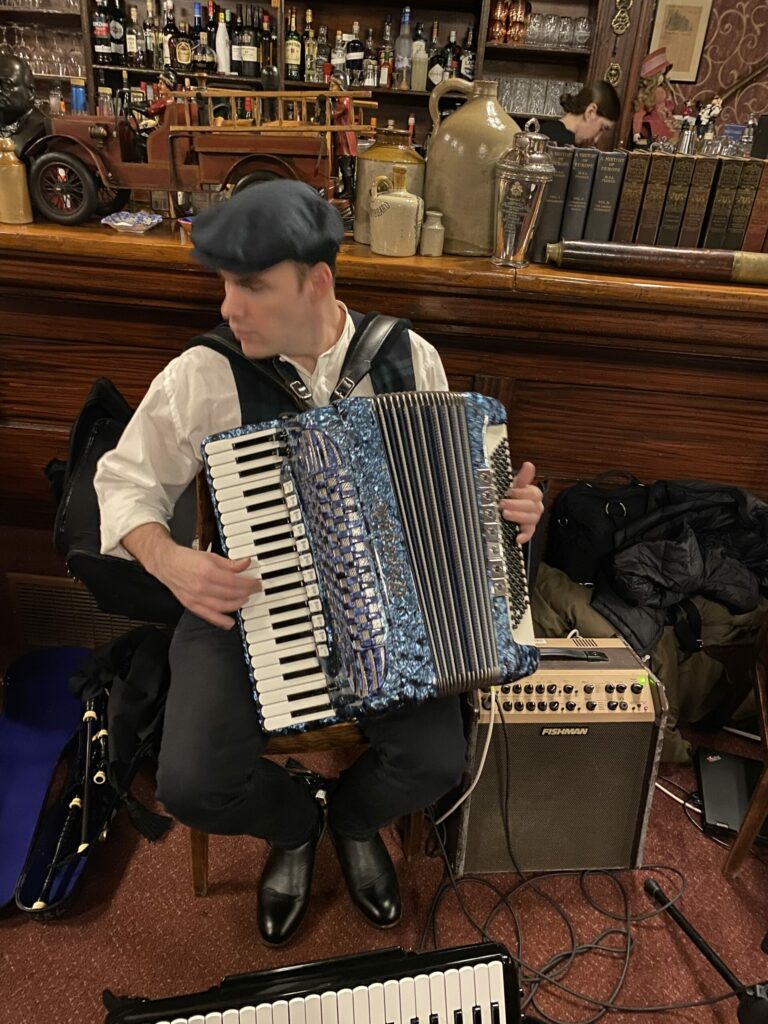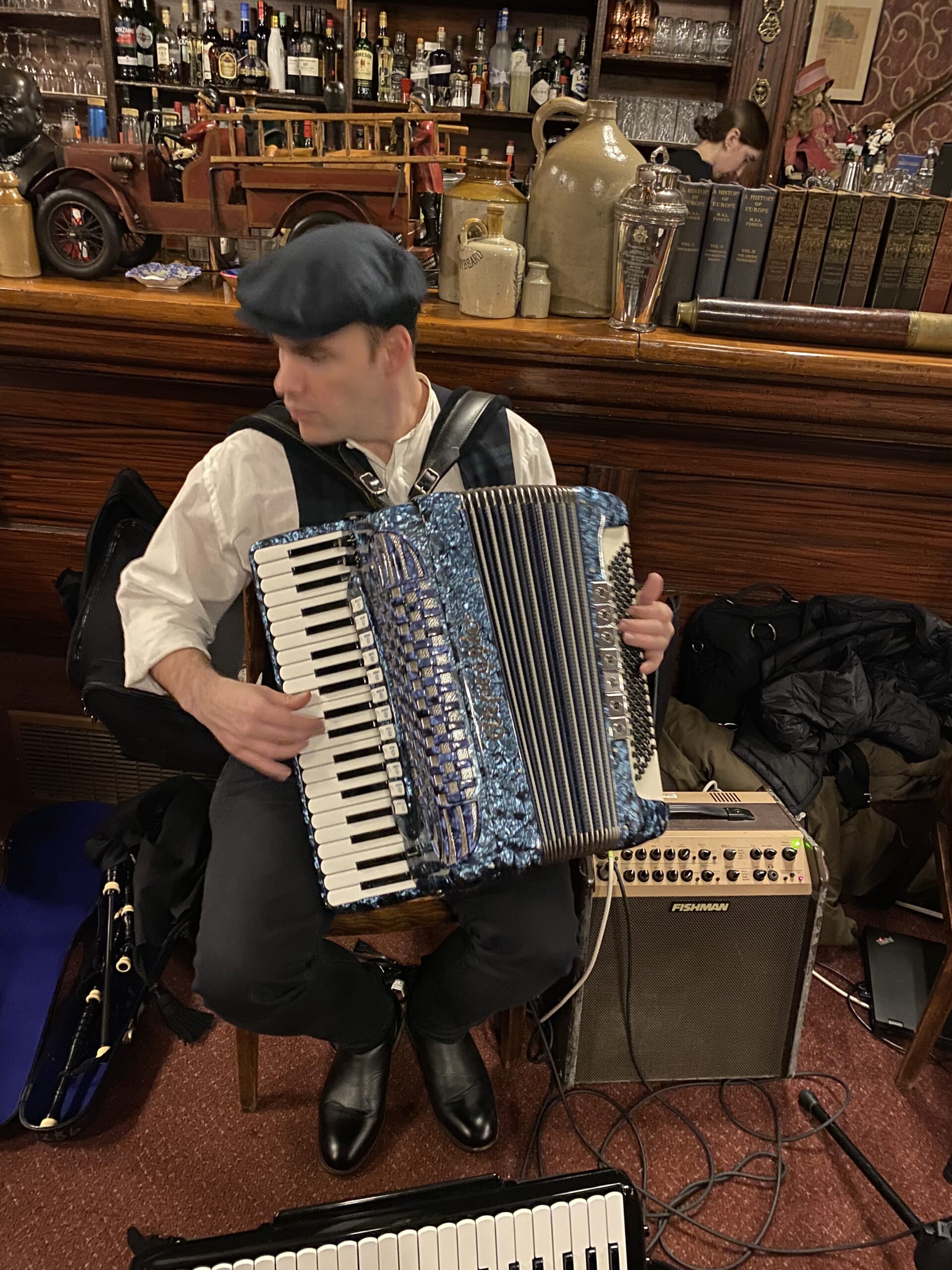A few years ago, we were invited to play for a Robbie Burns Supper at the beautiful Brigadoon Restaurant in Oxford Mills, Ontario. Such an honour—but there was just one problem: I didn’t have two hours’ worth of Scottish tunes. Could we pull it off anyway? Worth a try!

The event didn’t require us to stick to Scottish material exclusively, but I really wanted to keep the programme as authentic as possible—filling in the gaps with music that at least felt culturally adjacent.
What Is a Scottish Tune?
The first step was identifying which tunes I already knew that could be considered Scottish. Easier said than done.
We don’t always know exactly where a tune originated—and even when we do, that doesn’t mean it hasn’t been transformed along the way. Tunes that were once Scottish may have morphed through the Canadian fiddle lens, losing some of their stylistic fingerprints along the way. So what makes a tune still “sound Scottish”?
Instrumentation plays a big role. Everything sounds Scottish on bagpipes, although bagpipes do exist in many cultures. Accordion with a “wet” musette brings out that distinct Scottish flavour too. Jeremy has both of these well in hand, so we had a few building blocks to work with.
I’ll mention a few hallmarks that distinguish some Scottish fiddling that were helpful to me (for an in-depth discussion, check out Chris Haigh’s Fiddling Around the World ):
- Grace Notes & Cuts – Not at all exclusive to Scottish fiddling but to me the sound is even more crisp in the Scottish tradition with sharper attacks.
- Bowing Style – Bowing tends to be less smooth (than Irish styles), more articulate and rhythmic, with shorter, accented bows.
- Tune Types – Alongside, Scottish fiddlers play reels, jigs, marches, airs, pipe tunes, and strathspeys, uniquely Scottish tune type characterized by a short-long rhythmic element that we call a “snap”.
- Bagpipe Influence – Many tunes are adapted from or inspired by the Highland bagpipe repertoire. Drones and other ornaments imitate bagpipe moves. You’ll hear a lot of mixolydian and dorian modes, derived from scale limitations of bagpipes.
Burns Songs, and Other Inspiration
This celebration is all about Robert Burns, so I did a bit of research on the man himself, with a focus on his poetry, and the songs associated with his work. Burns set many of his poems to music. He was also a fiddler and a friend of the great fiddler and composer, Neil Gow. I listened to a lot of recordings of these songs and selected several to learn and sing for the show.
Of course, “Auld Lang Syne” was on the list—it’s a traditional closing to any Burns Night celebration. We also included:
- Corn Rigs
- The Winter It Is Past
- Green Grow the Rashes
- Sweetest May
- Auld Lang Syne

For fiddle inspiration, I turned to Hanneke Cassel, one of my favourites for contemporary Scottish-style fiddling. We’re also big fans of Gemma and Alan Small, a brilliant Shetland fiddle/accordion duo. They had posted full concerts online during the pandemic, and we had already learned several of their tunes. We went back to their videos and pulled out even more for this show. (Gemma is also a wonderful singer.)
Here are a few of Gemma and Alan’s tunes that we included:
- The Jacqueline Waltz
- Glenniford Polka
- Miss Betty Fitchett’s Wedding
- Callum Donaldson
- John Keith Lang
And of course, Jeremy brought out his bagpipes. He played four pipe sets, including twelve tunes and the ever-iconic Scotland the Brave.
Practice, Perspective, and the Joy of Not Knowing Everything
A lot of thought goes into preparing for any show—but this one, being our first-ever Burns Night, required a deeper dive. Between researching repertoire, learning new material, and adapting arrangements, we did a lot more preparation than what ended up on the final set list. I like to over-prepare, then let the performance guide the final choices.
That said, I want to acknowledge that my summary of Scottish fiddle music is a broad oversimplification. Scotland has many regional styles, each with its own history, ornamentation, and bowing traditions. I’m certainly not an expert—just a curious and respectful guest in the tradition. My goal was to do enough thoughtful research and practice to put on a show that felt genuine and honoured the spirit of the occasion, and I think we achieved that.
As a multi-genre fiddler, I love exploring different traditions. The trade-off, of course, is depth—any one style could take a lifetime to truly master. But that’s one of the things I find most inspiring about music: there’s no finish line. There’s always more to learn, more to uncover, more to be moved by. That’s what keeps me coming back to the instrument every day.

Leave a Reply